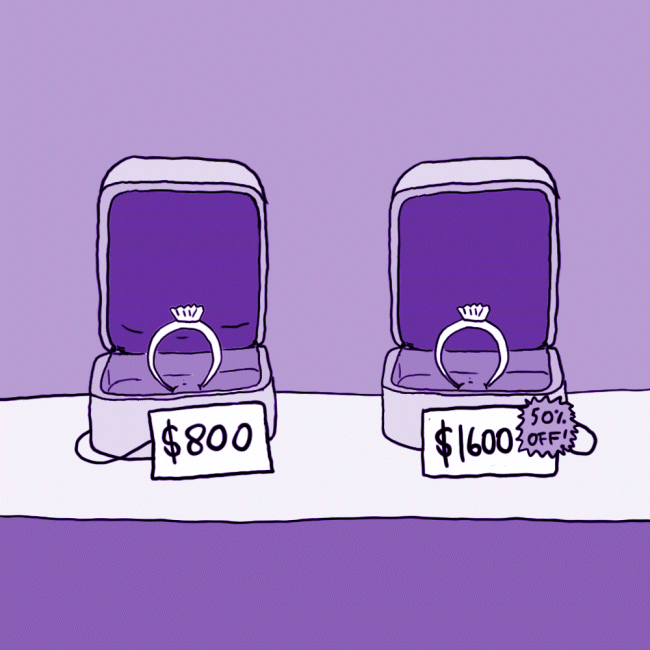The Why #77: Why do I buy things I know I don’t need, just because they’re on sale?
Question from Adrienne, Clayton
Ah Adrienne, it sounds like I’m not the only one who fell victim to Black Friday this year (which, as an aside, seems to have crept forward to now include Charcoal Tuesday, Light Grey Wednesday, and in some cases, even Slightly Off White Thursday). Sure, we know that three pairs of workout pants (for the price of two) is optimistic at best, and that there’s a good reason that neon green bag is now 60% off — but just look at those prices!
Of course, ‘you’ve got to spend money to make money’, ‘a dollar saved is a dollar earned’ and other neat sounding, generic (possibly out of context) advice is a great way to justify those savings (indulgences).
Some call it a shopping addiction. Others call it retail therapy. But let’s call it what it really is…
Anchoring
‘Anchoring’ is our tendency to depend too heavily on the first piece of information we receive when making a decision. Any subsequent information is weighed up against this first piece, which now serves as an ‘anchor’.
In 1974, Behavioural Science pioneers Kahneman and Tversky set out to test the power and pervasiveness of Anchoring. At the centre of this experiment was a specially designed roulette wheel, rigged to only land on numbers 10 and 65. Participants would give the wheel a spin, and after seeing which number it landed on, were asked to guess the percentage of African countries in the United Nations.
What’s the link between a roulette wheel and African countries in the UN? Absolutely nothing. So one shouldn’t influence the other, right? Wrong.
On average, people who saw the wheel land on number 10 estimated that 25% of African countries were in the UN. Conversely, those who saw the wheel land on number 65 gave an average estimate of 45% — almost double the first group. Without realising it, participants had been ‘anchored’ by the number they’d spun and made their high or low guesses accordingly.
So how does this relate to your fresh kicks and new-season sunnies? Well, Adrienne, when it comes to seeing a hot 25% off sale, or any sale for that matter, our brains automatically compare new prices to original prices. Delight, a disregard for what’s practical and transaction fees ensue.
When it comes to pricing, the key takeout for brands is to be cognisant of the competitive set that customers place us in, and the anchors that already exist. Once identified, the choice is either deciding how to price relative to the existing anchors, or stepping out into a new category and dropping an anchor of our own (a la Red Bull, Grilld or Netflix). If the stars do align and we’re carving out a new space, don’t be afraid to aim high, knowing that the first price we set will dictate the terms for whatever comes next.
Behaviourally Yours,
PS If you missed the last edition, you can still check out why we feel compelled to check the menu before we go to a new restaurant here.
Bad Decisions Podcast
Learn more about Anchoring in episode 7 of the Bad Decisions podcast.
Got a question?
Is there something you’ve always wondered about?
Send it through to AskDan@hardhat.com.au
Want more?
Check out Dan’s chat with the B&T TV team on why we see every brief as a behaviour change brief here.
The Why, The Book
If you’re a fan of having your curly questions answers, secure your copy of the newly released Amazon #1 Best Seller ‘The Why, The Book’ by Dan Monheit here.


